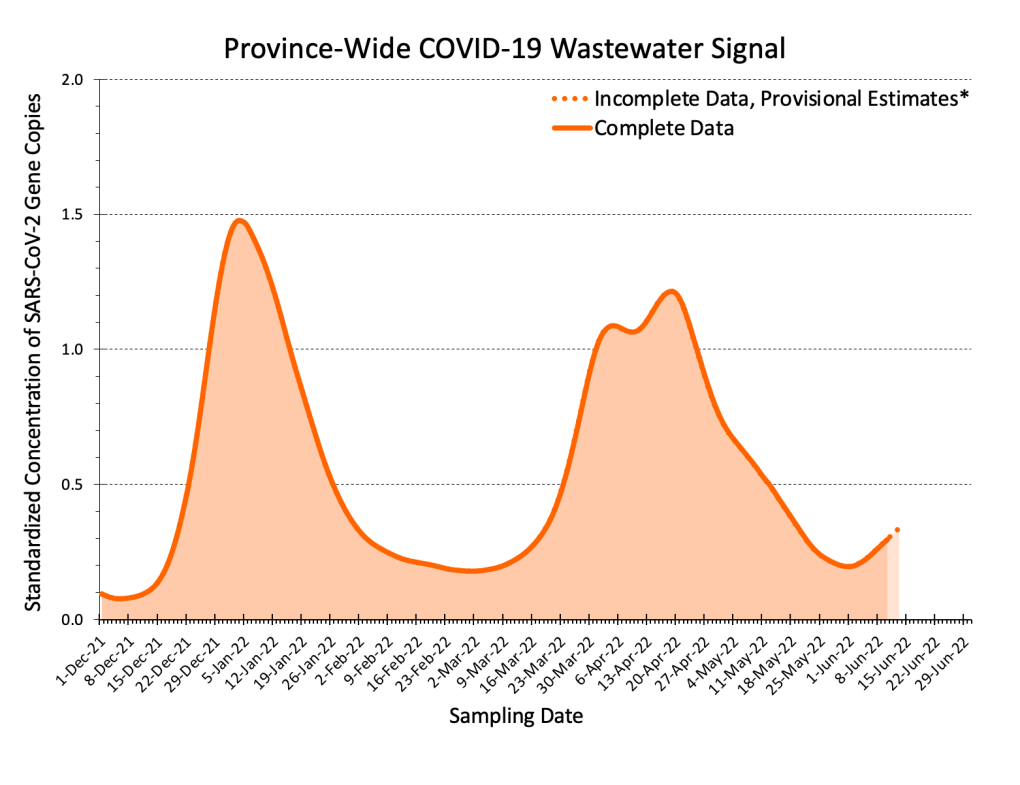As the summer approaches and COVID-19 health measures continue to loosen, experts say the rise of subvariants of Omicron could lead to another spike in cases in Canada.
The subvariants of BA.4 and BA.5 have been fuelling growing case counts in the U.S., Europe and elsewhere around the world. In Canada, the two variants made up 3.9 per cent and 6.5 per cent of COVID-19 cases, respectively, according to samples collected the week of May 29. Cases of BA.2.12.1, another growing subvariant, also represent 40.5 per cent of cases.
At a media briefing on Friday, Canada's Chief Medical Officer of Health Dr. Theresa Tam noted the growth of these subvariants, saying that they have "demonstrated a growth advantage in additional immune escape" over previous variants, citing waning vaccine immunity and viral evolution.
"We do not expect our progress to be linear, therefore maintaining readiness for a potential resurgence that could result in severe impact is our best advantage," Tam told reporters.
Toronto-based emergency room physician Dr. Kashif Pirzada says the rise of these subvariants shows how quickly the virus can mutate.
"It's evolving to beat our immunity and our vaccine and it looks like we're going to be in a world where we have waves every two to three months," he told CTV News Channel on Saturday. "The crazy thing is that immunity from previous infection, even if you got Omicron in the January wave or in the last month -- it may not protect you from this variant because it's different enough that your immunity won't be strong enough for it."
In Portugal, where the BA.5 variant made up 87 per cent of cases as of May 30, hospitalizations increased as a result. Last week, the Centers for Disease Control and Prevention announced that BA.4 and BA.5 now make up 8.3 per cent and 13.3 per cent of COVID-19 cases in the U.S., respectively.
"If you look at countries like Portugal, which got the BA.5 variant ... that's one of the highest vaccination rates in the world and you're seeing a spike in hospitalizations there. So, that could be a warning for us," said Pirzada. "Hopefully, summer weather here and schools being let out now will keep us from going that badly, but it means that we have to be cautious."
Dr. Zain Chagla, an associate professor at McMaster University in Hamilton, Ont., and infectious diseases physician at St. Joseph's Healthcare Hamilton, says it's still unclear what will happen in Canada.
Portugal, for example, has seen a large wave of BA.4 and BA.5 cases, but had a relatively small number of BA.2 cases, similar to South Africa, he said in an email to CTVNews.ca on Sunday.
But Portugal is also seeing a "decent percentage" of reinfections, with elderly individuals appearing to be the most likely to get sick, he says.
Having taken about six weeks to peak in Portugal, Chagla says another wave of Omicron cases could hit Canada over the next few weeks, with indoor, high-capacity and poorly ventilated spaces presenting a greater risk of COVID-19 transmission.
"At this point people should engage with what [they] feel comfortable, but recognizing as community rates rise so does exposure in these settings," Chagla said. "Masking with a well-fitted mask … adds protection in some of these settings."
He recommends that those who are at high risk of contracting COVID-19 be up-to-date with their vaccinations, including third and fourth doses. Canadians should also know where and how to get tested if symptoms develop, as well as how to get access to treatments, which are both widely available in Canada and can reduce the risk of COVID-19-related hospitalization.
Currently, Canada is seeing low rates of cases and hospitalizations and Tam said the Public Health Agency of Canada is feeling "cautiously optimistic about the current trajectory."
"If you compare where we're at now, versus where we were, you know, a month and two months ago, we're doing so much better," infectious diseases specialist Dr. Isaac Bogoch told CTV News on Friday.
However, Bogoch believes there may be a "summer bump in cases, depending on how this plays out," citing wastewater data in Ontario showing a recent uptick in SARS-CoV-2 concentrations.
"It's showing a slight bump in in the signal, and I don't think it's just a flicker," he said. "I think it's the real deal because if you look at the various areas of Ontario and this is not geographically unique to one area. You're seeing that signal in multiple geographic regions."
With files from CTV National News Toronto Correspondent John Vennavally-Rao
 Wastewater data in Ontario is showing a recent uptick in SARS-CoV-2 concentrations since the start of June. (Ontario Science Table)
Wastewater data in Ontario is showing a recent uptick in SARS-CoV-2 concentrations since the start of June. (Ontario Science Table)
COVID: Omicron subvariants could fuel bump in cases - CTV News
Read More

No comments:
Post a Comment